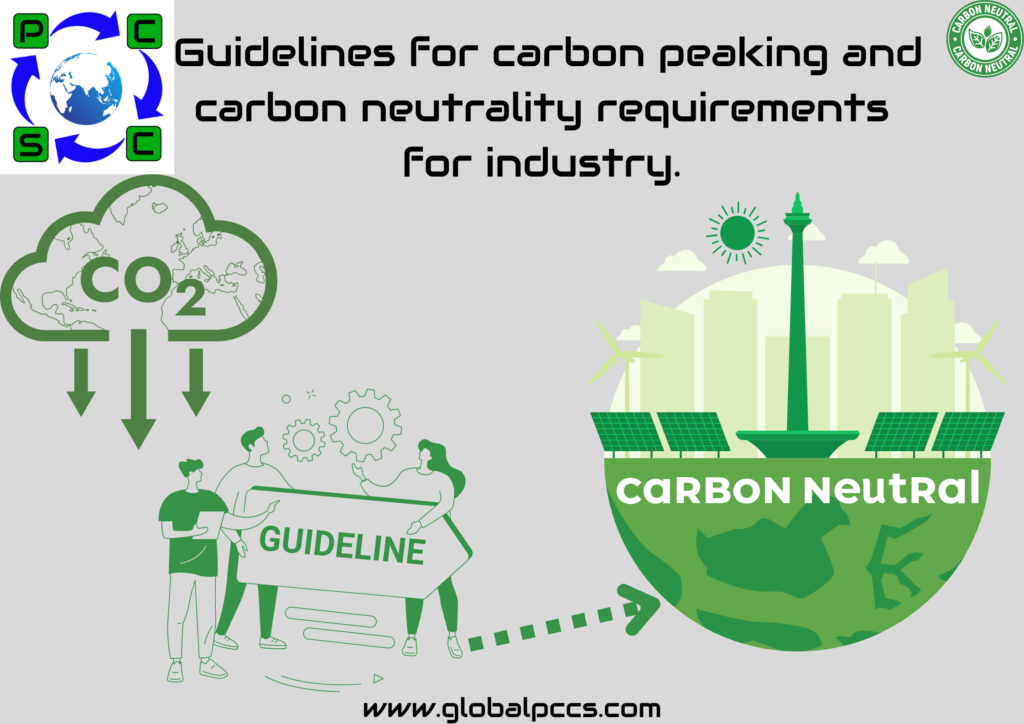
A draft of 2023 instructions on the creation of standards for carbon peaking and carbon neutrality in the industry sector was published on May 22, 2023, by China’s Ministry of Industry and Information Technology. Through June 22, 2023, the ministry will accept opinions on the draft. The draft recommendations provide a list of standards that are currently being developed or revised and offer frameworks for standards for carbon peaking and carbon neutrality in industry.
Main points of the draft guidelines
Standards for carbon peaking and carbon neutrality in industry are classified into five categories: basic and general standards, calculation and verification standards, technology and equipment standards, monitoring standards, and management and evaluation standards. Here is an outline of the standards categories:
- Basic and general standards include standards for
- Terminology,
- Data quality,
- Labeling of greenhouse gas emissions and emissions reduction,
- Carbon labeling of products, and
- Low-carbon evaluation labeling.
2. Calculation and verification standards include standards for
- The calculation and verification of greenhouse gas emissions,
- The calculation and verification of greenhouse gas emissions from projects,
- The calculation and verification of product carbon footprints, and
- Qualifications required for organizations and persons performing the verification.
3. Technology and equipment standards include standards for
- Greenhouse gas emission control at source by means such as the use or substitution of low-carbon raw materials, renewable energy and new energy,
- Emission control in production processes through efficient use of energy, the cascading use of energy, energy storage, the recovery and utilization of surplus energy, etc., and
- End-of-pipe treatment, including carbon capture, utilization and storage (CCUS) and direct air capture (DAC).
4. Monitoring standards are standards for
- Technology to monitor the density and intensity of greenhouse gas emissions,
- Monitoring and analysis methods, and
- Monitoring equipment and systems.
5. Management and evaluation standards are standards for
- Low-carbon evaluation,
- Carbon emission management, and
- Carbon asset management.
The draft guidelines include a list of published standards and standards under development and revision for carbon peaking and carbon neutrality in industry. For example, standards for carbon neutrality in the electronics industry and technical standards for the evaluation of low-carbon electronic products are now under development.
Development targets
- By 2025, develop most of the standards for carbon peaking and carbon neutrality in industry.
- Develop over 200 standards immediately needed to achieve carbon peaking.
- Develop standards with focuses on basic and general standards, calculation and verification standards, low-carbon technology and equipment standards, etc. as key areas; and provide technical support for carbon dioxide emissions assessment, emissions reduction, etc. in industry.
- Expedite the consideration and development of standards for carbon dioxide emissions management and assessment, promote further emissions reduction in industry, and lead the low-carbon and high-quality development of relevant industries.








 Authorised IMDS & CDX Training & Consulting partner for
Authorised IMDS & CDX Training & Consulting partner for





